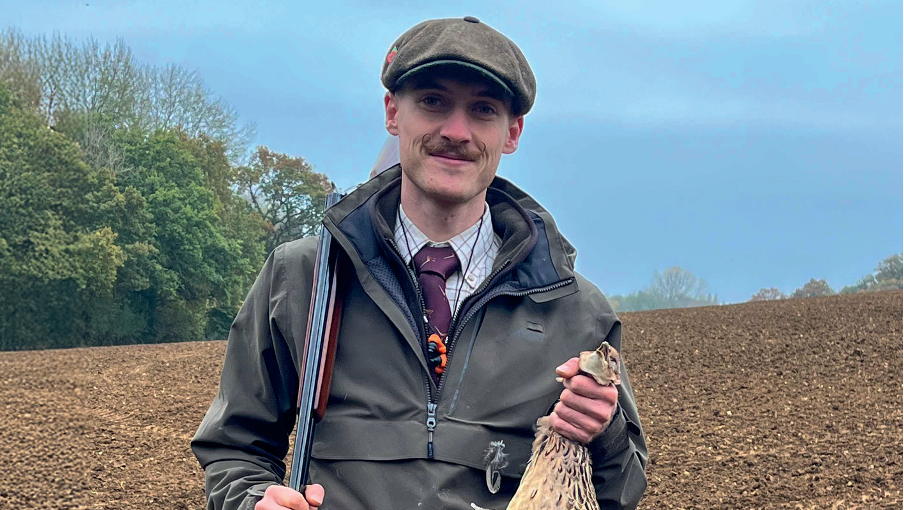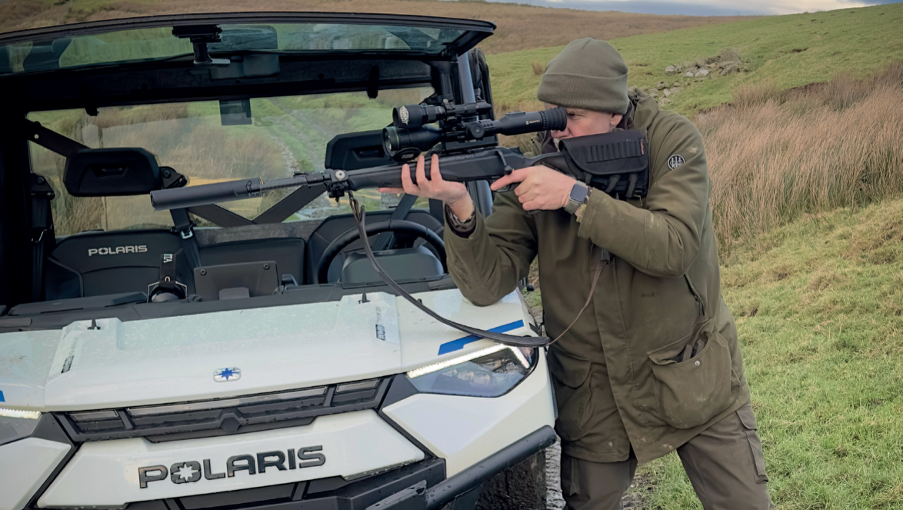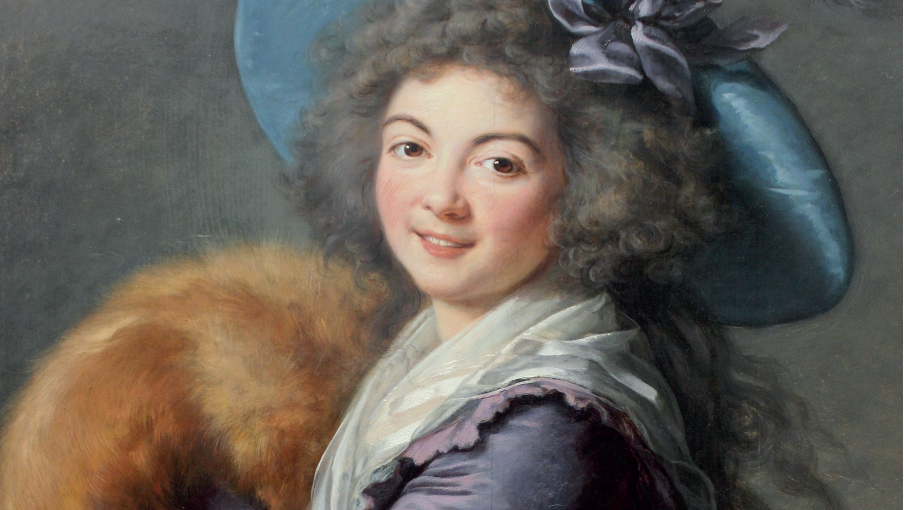News
Season Finale
Would you like to appear on our site? We offer sponsored articles and advertising to put you in front of our readers. Find out moreJackie Drakeford and her team spend their last full days ferreting on Dark Ridge a hard to reach place where rabbits are big, buries deep and nettles fierce…
Here’s a ‘school’s out’ feeling to the last few weeks of ferreting, because our season is governed not by the date but by hormones, livestock and weeds. Ferrets come into breeding fettle and have other kinds of ferreting on their minds, rabbit kittens appear, dashing through the net mesh or staying underground and giving the ferrets the run-around, tiny new nettles are delivering a winter’s worth of stored-up venom not just on bare skin but through our clothing too, and farmers are turning out livestock and wanting their fields back from our attentions. For others, the cut-off comes at the peak of their sport, when the calendar suddenly says “No More” and they are going home with dogs or hounds and horses fit as fleas and nothing to do next Saturday. But we ferreters? We are luckier, because we can wind down more gently.
This is when we bring out the ‘B’ team – the old ferrets or last year’s kits, the novice dogs just starting or the senior ones that can’t do a full day any more, and we tackle the small and tricky buries that use up too much time on a short winter day when we could be cracking on with the big ones. Unlike with most other fieldsports, we have the chance to work with a lighter attitude than during the serious stuff of the main season. Our landowners have seen results, and we can afford to give the odd rabbit a sporting chance for the benefit of educating a young dog or making an old one feel worthwhile, or to try something new and see if it works. Now is the time we can turn our attention to those rough and hungry places that only hold a handful of rabbits, ASBO types evicted from the main buries because of social undesirability. The huge buries that we tackle in the depths of winter, when rabbits are underground in quantity, and we go mob-handed to clear them, will be left until after harvest now.
Rabbit dynamics change at this time too, for now is when they are found in pairs or fours rather than the big groups of winter rabbits. Set seven nets or seventy, there will only be one or two pairs in each bury, so the time taken netting has to be set against the likely result, which gives a time-management reason to leave the nets in the bag, or else only net a few holes, and let the dogs run instead.
So our final few weeks at the game have a certain levity about them: it is a mopping-up operation on the periphery of serious rabbit control. Now we can afford for a rabbit to escape here and there, to give a young lurcher its first taste of what happens when the ferret slides underground. If a ‘squeaker’ bolts, the net won’t hold it because it flits straight through the mesh, but it’s an easy confidence-giving catch for an apprentice dog. Start them on small buries and small numbers of rabbits, just one or two ferrets down so the bolts come one at a time, and you lay foundations for a good ferreting dog, whereas a sensitive youngster might be overwhelmed by the fast action of big buries on a winter’s day, or those long waits in sour weather when rabbits are reluctant to leave. A ferreting dog – as opposed to a dog that goes ferreting – has much to learn, and needs a quiet arena to learn it. Critical to the learning process is stopping before the dog gets bored, exhausted or too cold to enjoy itself, as well as ending on a good note rather than yielding to temptation and doing one more bury.
Dark Ridge
Our last full day as a team is always spent on Dark Ridge. Folded so deeply into the South Downs that the sun rarely penetrates, it is best reached by four-wheel drive, hang-glider, or setting out the day before. As we can usually only manage one 4WD, we shoehorn everything we need into it using a method called ‘somehow’, and with our younger members clinging to the sides and the dogs running behind, we chug as far up the ridge as we can before we have to take up our baggage and walk. There will be a certain amount of dismay occasioned by the fallow deer departing (three black does, one cream buck), and then the ground is ours. Dark Ridge buries are old and deep, and have been occupied for centuries, apart from a hiccup in the early years of myxomatosis. Rabbits are big and fat, for not much bothers them up here apart from foxes and buzzards. In summer, nettles tuft the warrens so that neither dog nor ferret is willing to investigate, while rabbits slide unscathed between the leaves. Even terriers baulk at Dark Ridge nettles. But now they are mere brown stalks, with the new ones only just beginning, and we have a short time of access each year between the old nettles dying off and the new ones coming up. If only it wasn’t such a pig of a place to get to, but the bigger the challenge, the more the fun.
We pick one bury per dog with plenty of space between because they are here to learn a job, not eye up other dogs, and whoever has the camera this time stalks from bury to bury seeking that career-making shot. As the day unfolds, a sun we can’t feel glows half-heartedly above us, and a buzzard slides past sideways to see if we are paunching-out yet. Sorry old chap, but regulations say we must bury our paunch, even if the fox digs it up half an hour later. Maybe he’ll leave you some. Our young ferrets gain in confidence with every try below ground: at first they are uncertain, hesitating at the rabbit holes, but before long they are fluffing-up and shaking out like a falcon rousing, and then dashing under. They aren’t always so pleased to be picked up once they are really enjoying themselves. A spectacular burst of nautical English indicates that one ferret has become over-excited and nipped the hand that feeds it, while on another bury, one of us is lying on the ground up to his armpit in rabbit-hole, with a ferret holding onto the other end of the rabbit he is gripping. This is when a helpful dog comes up and licks your face.
If you can possibly avoid digging at Dark Ridge, it is a good decision. Therefore when a ferret is slow to reappear, we use locators to see if it is moving or still, always supposing that it hasn’t gone too deep for the locator to locate, but we delay that graft moment as long as we can. Tyro ferrets don’t always have the courage to penetrate deeply into these old buries, and can sometimes be dislodged by putting an older ferret in, but it is a case of knowing your ferrets because it would be so easy to turn one problem into two. So there is time to sit and watch, and usually the issue resolves by itself. A little brown head might appear cautiously at this hole and then that, before committing to a bolt, or more usually a sneak-out between the dried-up nettle stems. This is where the novice dog might move too soon, but will learn by its mistake, where the canny old dog will stand motionless on three legs, one front foot raised and only the twitching ears showing what she knows. At exactly the right distance she will pounce and lift the rabbit, turning to look at you with eyes snapping triumph. And with luck, a few moments later, out will come your missing ferret, sniffing myopically along the scent of its quarry. “Did any of you get that?” it asks. “I worked my butt off to shift it”.
Dark Ridge days end quite early, with the paunching-out ceremony into a hole someone could not avoid digging, and a shaman-like inspection of the entrails for such interesting matters as pregnancies and parasites. Anything unusual such as tooth deformity or injuries is photographed unless batteries have gone flat, and then we realise, as we do every year, that we have to carry everything, including our pile of rabbits, up to the top of the Ridge. Hocked rabbits are slung along graft and slasher handles, as well as lengths of rope brought in the net bags for the purpose, and we slog our way to the top. Once there, the view is awesome, and we stop for a long survey while our breathing eases and the tadpoles cease to shimmer before our eyes. As a concession to geriatrica, I only have to get myself up the Ridge while the young’uns carry the gear, but even so my breathing is the harshest, and hypoxia beckons. Then there is the tea ceremony, when flasks are shared and the contents of lunch bags pooled, where food has never tasted so good despite the lingering pong of rabbit guts, and the dogs lie close, waiting for crusts, except for the one looking longingly at the fallow, which are just creeping back over the rise. A sharp word, and the dog sinks apologetically back down again, flattening its ears in supplication, when all is forgiven and it gets a piece of pork pie.
We might, as individuals, have the odd nip-and-tuck few hours here and there after the Dark Ridge day, but that is the official end of our ferreting season, and it can come at any time between March and the end of April. We will still be hunting rabbits through the summer, but by different ways. Ferrets will be breeding, maybe there will be a litter of puppies in our circle, the old dogs will have a lazy summer and the young ones will learn some new skills. There are nets to check and mend, and bags, ferret boxes, collars and locators to refurbish or replace. We shoehorn the gear plus pile of rabbits into the vehicle, and walk back behind it, downhill all the way, feeling the cold and that contented tiredness that you only get from a long day out of doors at your chosen sport.
Related articles
Manage Consent
To provide the best experiences, we use technologies like cookies to store and/or access device information. Consenting to these technologies will allow us to process data such as browsing behavior or unique IDs on this site. Not consenting or withdrawing consent, may adversely affect certain features and functions.
Functional Always active
The technical storage or access is strictly necessary for the legitimate purpose of enabling the use of a specific service explicitly requested by the subscriber or user, or for the sole purpose of carrying out the transmission of a communication over an electronic communications network.
Preferences
The technical storage or access is necessary for the legitimate purpose of storing preferences that are not requested by the subscriber or user.
Statistics
The technical storage or access that is used exclusively for statistical purposes.
The technical storage or access that is used exclusively for anonymous statistical purposes. Without a subpoena, voluntary compliance on the part of your Internet Service Provider, or additional records from a third party, information stored or retrieved for this purpose alone cannot usually be used to identify you.
Marketing
The technical storage or access is required to create user profiles to send advertising, or to track the user on a website or across several websites for similar marketing purposes.





